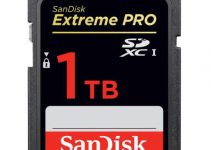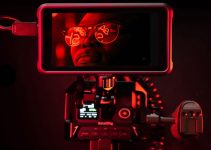8K is shockingly real. As someone who closely follows the industry I knew it was very much on the way, but I didn’t think we would see it in some consumer mirrorless cameras this soon. Certainly still not cheap enough for everyone, the Canon R5 and Sony a1 have definitely changed the conversation about 8K video and its practicality.
If you were looking at these newer releases and figuring out which you might want to upgrade to for adding 8K to your kit you should view this video by Dan Watson. He’s been hands-on with both and tackles it from real-world shooting experience and not just on the specs alone.
Quality Comparisons
8K is the big number – and the one Watson chooses to start with – but there is a lot more to these cameras. With 8K you can absolutely see a difference between 8K and 4K quality. It is without a doubt the way to get the highest quality footage from the R5 and a1. They use their best sampling and resolution in these settings.
Moving to 4K, the R5 does have a true downsampling option (4K HQ) that will take the 8K readout and create a beautiful 4K image. The problem here is overheating. To get around the overheating there is a lower quality mode that uses binning to get to 4K. It is noticeably a little softer than the HQ option.
The a1 only has a single option for 4K and that uses a fairly accurate binning method that actually does a great job at creating good 4K footage. It’s a little less than Canon’s 4K HQ option, but leaps and bounds better than Canon’s standard option.
Practically speaking, the a1 wins for 4K because it is much more usable. The R5’s HQ mode is nice but the overheating severely limits its usability.
Build, Ergonomics & Color
Canon does win out with the design choices. The R5 has a fully articulating screen versus the a1’s tilting screen and while the a1 has a better viewfinder this isn’t a huge thing for video.
An interesting point is color. While the Sony a1 seems to have more accurate color based on the color chart test, the R5 tends to have more pleasing color science to Watson’s eye. There’s a degree of personal opinion here but the love of Canon colors is not a rare thing.
Bitrates & Formats
Looking at the raw specs, Canon offers some better options. The R5 has 8K raw as a real option for internal recording. That’s tough to beat. However, if you look closer at the specs you’ll see that the file sizes are humongous. Plus, Canon has a weird limitation in that you have to use Canon Log to record in 10-bit. Not sure why, but there is that. Plus, it’ll require H.265. If you have issues with those formats on your computer you should consider these things.
Sony is a lot more open and reasonable with their formats. There are some high-end modes that will require H.265 (8K in particular), but it can do 10-bit with various compression options and bitrates. And, you can choose whatever Picture Profiles you like. Being open with the options is a major advantage if you plan to use the camera for professional video jobs.
Going more into raw options. The Canon can do 8K raw internally, which is the only way to record raw at the moment. Supposedly the Ninja V+ will work with the R5 for 8K raw video. The Sony can output raw as well, however, it’s an odd 4.3K raw that will be ProRes RAW into a Ninja V. NLE compatibility with vary.
Potential Issues
Off the bat, the R5 has a big issue for video in that it does not offer any form of unlimited recording. At best you are getting 30 minutes. You also can’t dual record at all with Canon. Both of these are non-issues for the Sony a1.
As for Sony, one potential issue is the use of new CFexpress Type A media. They are better than SD cards but they are more expensive and right now only Sony makes them. You can only get them up to 160GB right now. That’s not necessarily enough, plus the maximum record speed is about half that of CFexpress Type B. With CFexpress Type B in the R5 being more common the price is way lower now and sizes are much, much higher.
Overheating
Let’s not beat a dead horse here, but the Canon R5 has bad overheating. Real bad. In 8K that gets you up to around 20 minutes, in 4K60 you get up to 30 minutes.
In similar conditions, the a1 is able to record over 40 minutes in 8K as a single take. 4K60 got to an hour and 10 minutes. That’s much more usable.
Moving outside to direct sunlight the a1 actually was about the same if not a little worse than the R5. The direct sun has a big impact on Sony’s performance.
Price
Last point is the price. Right now the a1 is way higher at $6,500 while the R5 sits around $3,900. The Sony also sits high on the photo side, so just using it for video you might find it hard to justify.
A bonus point is that the Sony provides much more control over shutter speed which can help with flicker in your footage. Nice option to have that Canon doesn’t offer.
Final Thoughts
The Canon R5 does work well and has amazing specs, it just really falls flat with all the odd limitations. Sony has fewer disadvantages and you can easily work around them. So, the a1 is the better option with a better price.
What’s your take? Is the R5 still appealing due to its lower price?
[source: Dan Watson]
Order Links:
- Sony a1 Mirrorless Camera (B&H, Amazon, Adorama)
- Canon EOS R5 Mirrorless Camera (B&H, Amazon, Adorama)
Disclaimer: As an Amazon Associate partner and participant in B&H and Adorama Affiliate programmes, we earn a small comission from each purchase made through the affiliate links listed above at no additional cost to you.




